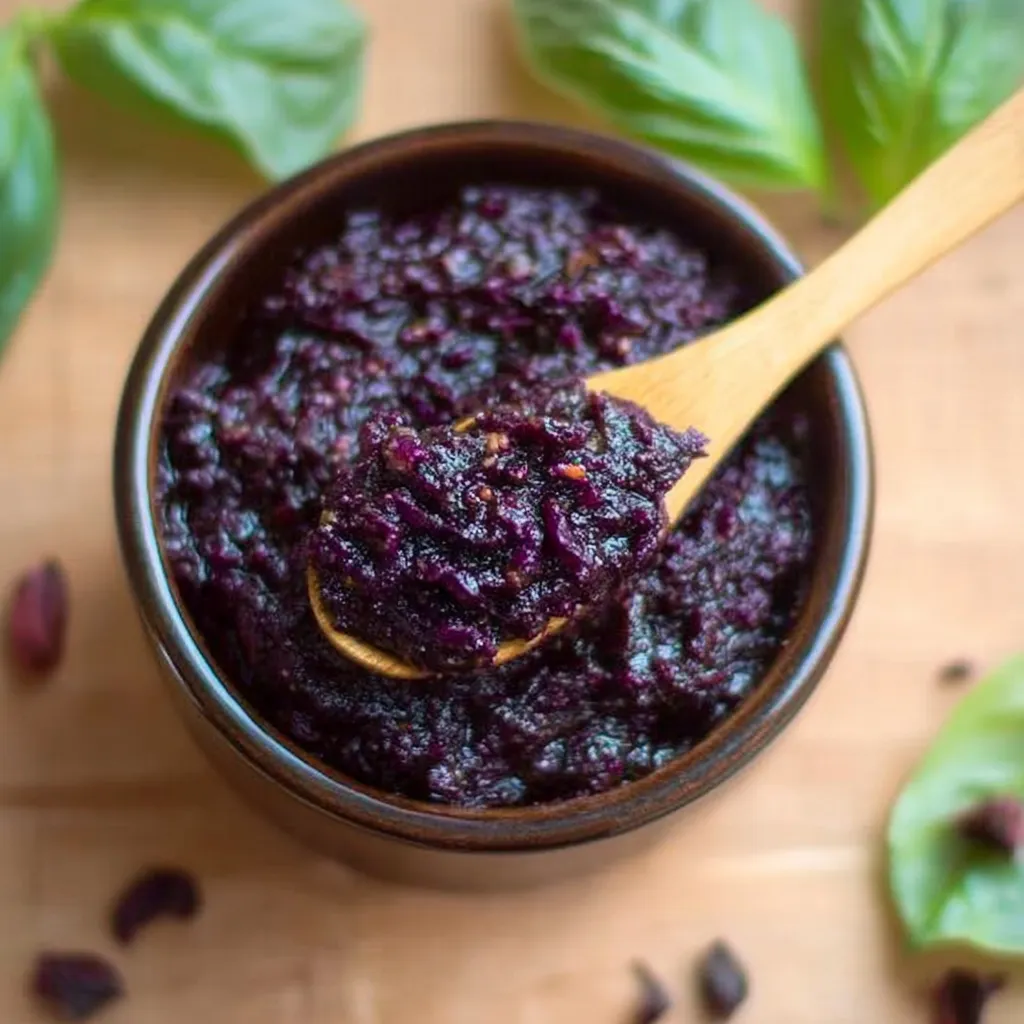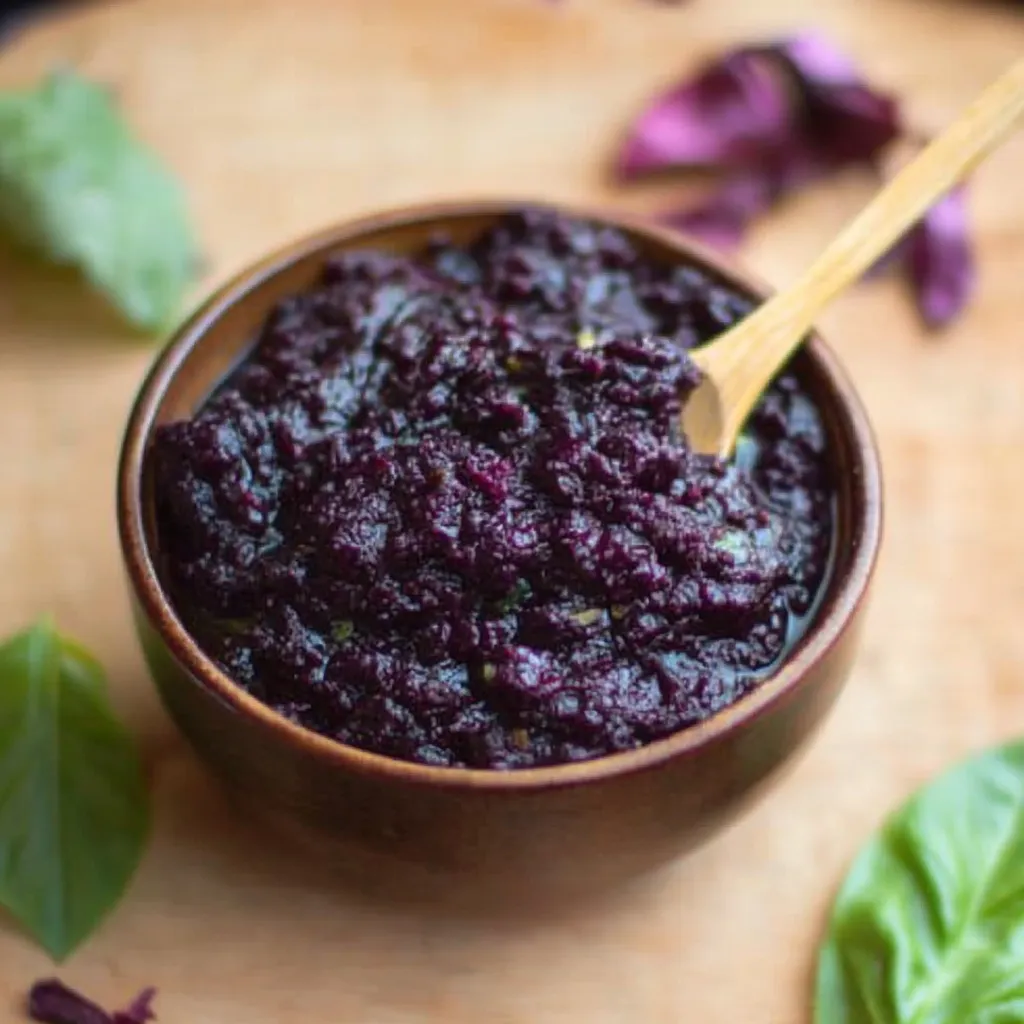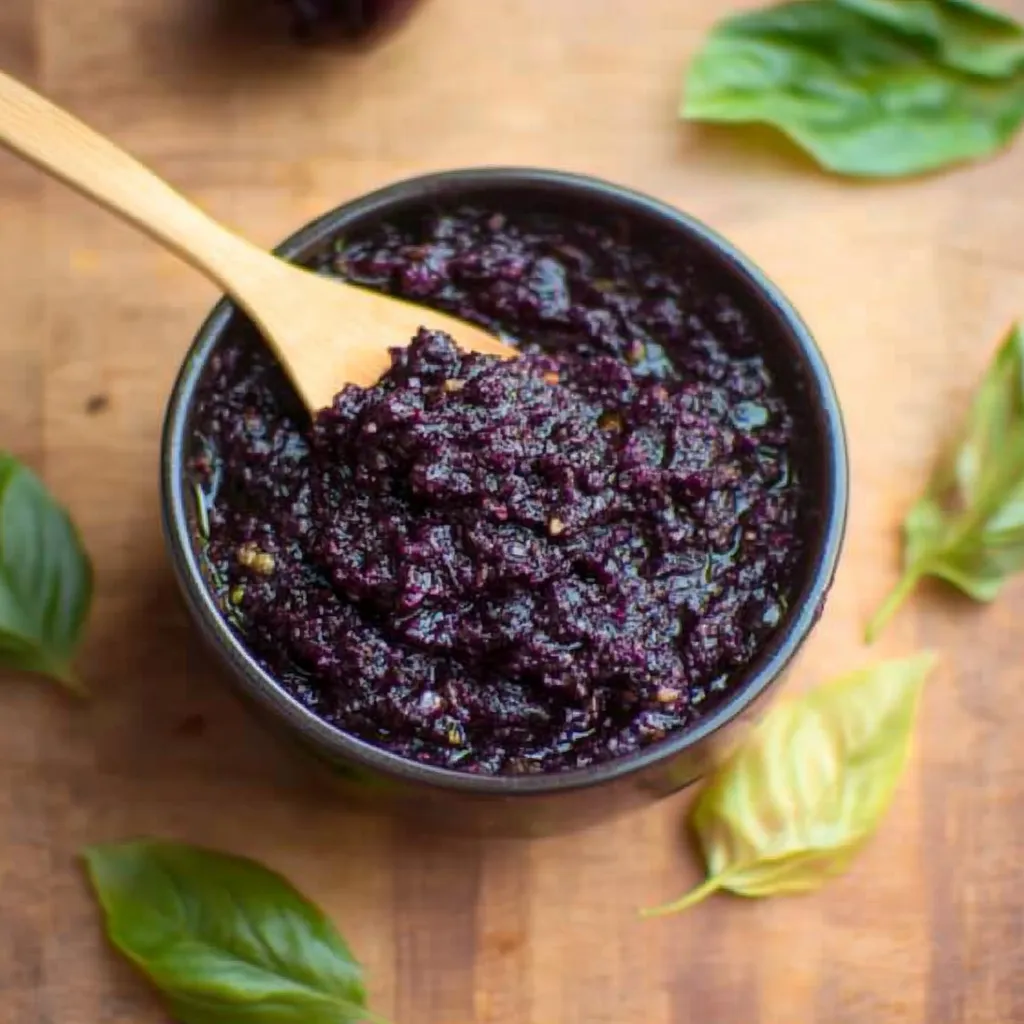 Pin it
Pin it
Purple basil pesto brings vibrant color and unexpectedly floral notes to a classic sauce. It is perfect for tossing with pasta or drizzling over roasted vegetables. I first experimented with purple basil after stumbling on a big bouquet at the farmers market. Its striking color made every meal feel like something extraordinary.
My friends always ask where I found purple pesto. The flavor is familiar but with a subtle floral twist that tingles your tastebuds. My nephews love spreading it on sandwiches and claim it is the prettiest sauce they have ever seen.
Ingredients
- Pine nuts: These nuts lend richness and the classic creamy texture. Make sure to choose fresh pine nuts for the best taste since old ones can turn rancid. Snap up any that smell sweet rather than musty.
- Purple basil leaves: The hero of this pesto. Purple basil brings earthy and floral notes and the color stays jewel bright if you blanch it quickly. Pick leaves without bruises for the best flavor.
- Large clove of garlic: Garlic gives the sauce zip. Use a garlic clove that feels firm and tight in its papery skin for a milder bite. Squishy garlic usually means harsh flavor.
- Extra virgin olive oil: Good olive oil brings the pesto together and adds its own fruity peppery notes. Look for one that tastes clean and grassy from a reliable source.
- Juice of 1 lemon: This adds brightness and prevents discoloration. A plump lemon with smooth skin will yield more juice and less bitterness.
- Parmesan cheese, grated: Parmesan builds umami depth and helps thicken the sauce. Grate your own right before using if possible for extra nuttiness.
- Salt, or to taste: Just enough salt makes all the flavors pop. Choose fine sea salt to blend in smoothly.
Step-by-Step Instructions
- Toast the Pine Nuts:
- Spread pine nuts in a dry skillet on medium heat. Stir frequently until golden brown and fragrant. Watch closely since pine nuts burn quickly. Remove from heat and cool.
- Blanch the Basil:
- Boil a medium pot of water and ready an ice bath nearby. Drop the basil leaves into boiling water for thirty seconds. Scoop them out and immediately transfer to the ice bath. This locks in the vivid purple color. Once cold, strain and gently squeeze dry.
- Blend Pine Nuts and Garlic:
- Place toasted pine nuts and garlic into a food processor. Pulse together until they break down and begin to look like sand. Scrape the bowl as needed. If the mixture seems dry, add a trickle of olive oil to help it blend.
- Add Basil and Olive Oil:
- Add the blanched basil to the processor. Pour in the olive oil. Pulse a few times, scraping the sides, and continue until the mixture is a thick, smooth sauce but still shows flecks of basil. Take care not to over-process, which can dull the color.
- Incorporate Parmesan, Lemon and Salt:
- Sprinkle in the grated parmesan cheese, squeeze in the lemon juice and add salt to taste. Pulse just until mixed together. Taste and adjust seasoning if needed. The pesto should look creamy, lush, and deep purple.
- Serve or Store:
- Spoon into a bowl and use right away for maximum freshness. Or pack into an airtight container and cover with a thin layer of olive oil for storage.
 Pin it
Pin it
The purple basil is always my favorite part to grab at the market. The fresh floral scent transports me right back to summer afternoons spent with my grandmother in her herb garden. She would always let me pick the prettiest leaves.
Storage Tips
Fresh pesto will keep in the refrigerator for up to a week as long as you press a layer of olive oil over the surface to prevent browning. For longer storage, spoon pesto into an ice cube tray, freeze, then pop out the blocks and store in a zip bag. Frozen pesto adds instant flavor to soups and grain bowls well into winter.
Ingredient Substitutions
No pine nuts in the pantry? You can substitute walnuts or blanched almonds for similar creaminess. If you are dairy free, try using nutritional yeast instead of parmesan cheese. It still makes the pesto rich and savory although the flavor is different. Regular basil works in place of purple basil if you cannot find it, but the stunning color will be lost.
Serving Suggestions
Toss with hot linguine and cherry tomatoes for a speedier dinner. Use as a dip for crunchy vegetables or swirl it over ricotta toast. It dresses up simple grilled chicken or potatoes and makes a memorable pizza base for a homemade white pizza.
 Pin it
Pin it
I learned to always make extra purple basil pesto in the summer because it became the star of our family picnic sandwiches and every bite seemed to pop with flavor and color.
Frequently Asked Questions
- → Why blanch the purple basil?
Blanching helps retain the basil's vivid purple color and prevents browning from oxidation.
- → Can I substitute pine nuts?
Yes, walnuts or almonds work well for a similar creamy texture and nutty depth.
- → How should I store purple basil pesto?
Store in an airtight container in the fridge for up to a week or freeze for longer shelf life.
- → What dishes pair with this pesto?
Try tossing with pasta, spreading on sandwiches, or drizzling over grilled vegetables or meats.
- → Can I use green basil instead?
Absolutely. Green basil offers a classic flavor, but purple basil adds striking color and a unique twist.
- → Is lemon juice essential?
Lemon juice balances the richness and helps maintain freshness, but can be adjusted to your taste.
